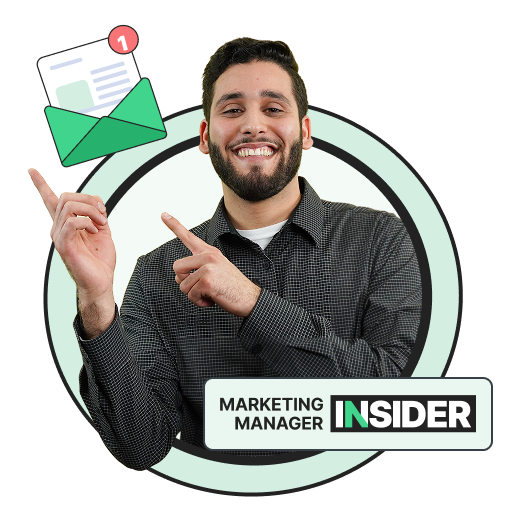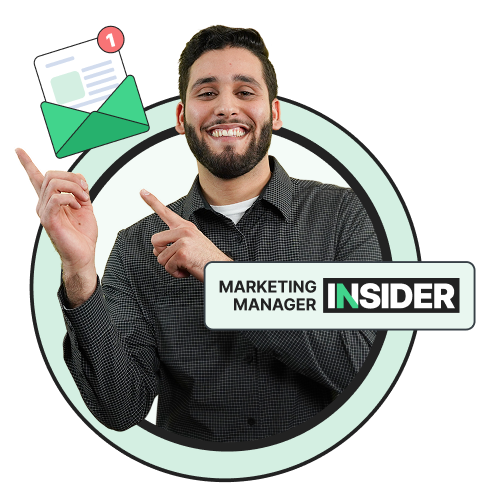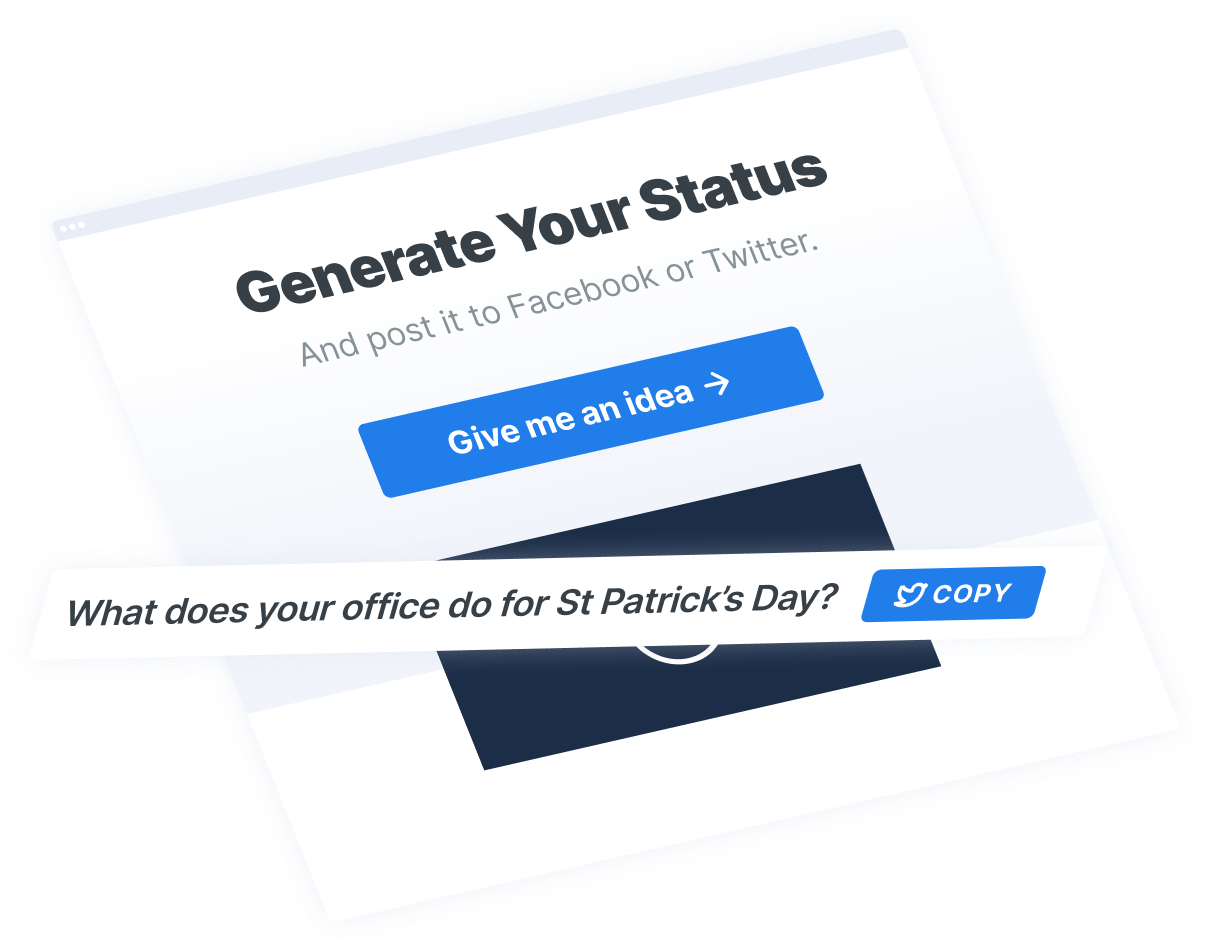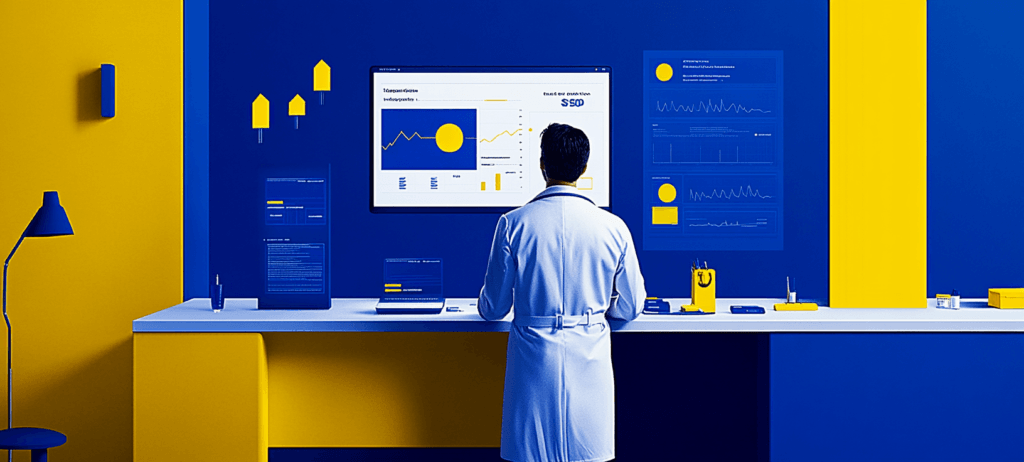- Home
- Blog
- Social Media
- LinkedIn Ad Targeting Options and Best Practices
LinkedIn Ad Targeting Options and Best Practices
-
 Published: Mar 5, 2024
Published: Mar 5, 2024
-
 7 min. read
7 min. read
-
 Savannah Swanson
Savannah Swanson Lead Digital & Social Trends Writer
Lead Digital & Social Trends Writer
- Savannah is a content marketer with editorial experience spanning several businesses. Specializing in social media and marketing trends, she loves talking about the latest developments in online marketing. When she’s not writing, Savannah loves traveling, hoarding books and coffee mugs, and adoring her cat. Please don’t ask her about famous true crime cases, or else she’ll tell you all about her theories and get absolutely no work done.
LinkedIn ad campaigns are a great way to get your marketing content in front of the audiences that matter most to your business. But to do so effectively, you need to know how to optimize LinkedIn ad targeting options.
Today, we’re giving you the scoop on the basics of LinkedIn ad targeting. Stay tuned as we cover:
Key Takeaways
Read on to learn more about LinkedIn’s ad targeting options and best practices for optimizing your campaign targeting.
Looking for more tips on running a successful digital advertising campaign? Sign up for WebFX’s email newsletter to get the latest digital marketing insights and tips sent straight to your inbox.
Join 200K smart marketers for the hottest marketing news and insights in your inbox. “*” indicates required fieldsDon’t miss our Marketing Manager Insider emails!
Inline Subscription Form


LinkedIn ad targeting options
When running a LinkedIn ad campaign, there are five targeting options advertisers can choose from:
LinkedIn Ad Targeting Options
Keep reading to learn more about each targeting option for LinkedIn ad campaigns.
1. Location targeting
First on this list of targeting options for LinkedIn ads is location targeting, which is required for all campaigns. Advertisers can reach audiences based on where they live or by searching for specific locations.
When targeting audiences by location, keep in mind:
- Geographic locations are based on the permanent or long-term location specified by the LinkedIn member in their profile.
- Short-term visits are specified by IP address.
- Message ad campaigns are only targeted by permanent or long-term locations.
- Location attribute targeting may be limited when targeting the European Economic Area (EEA) and Switzerland.
2. Audience attribute targeting
When using LinkedIn’s audience attribute targeting option, you’ve got plenty of options for how exactly you want to target your ads. Audience attribute targeting includes targeting by:
- Company
- Demographics
- Education
- Job experience
- Interests & traits
Company
Audience attribute targeting can be especially helpful for business-to-business (B2B) social campaigns because company attribute targeting options are very robust, making precise audience segment targeting possible. LinkedIn’s company attribute targeting options include a company’s:
- Category
- Connections
- Followers
- Growth rate
- Industry
- Name
- Estimated annual revenue
- Size
Demographics
When targeting LinkedIn ads by demographics, advertisers have two options to choose from:
- Member age
- Member gender
This information is inferred based on LinkedIn members’ profile information.
Education
Advertisers can also target LinkedIn ads based on education information, like:
- Degrees or recognized ranks granted by universities, colleges, or other learning institutions
- Fields of study
- Specific schools, colleges, universities, or other learning institutions a member attended
Job experience
LinkedIn’s job experience targeting options give advertisers plenty of ways to find their ideal audience. Advertisers can target LinkedIn ads based on:
- Job function, seniority, and title
- Member skills and relevant keywords found within a member’s profile
- Years of experience
Interests & traits
Finally, targeting options for LinkedIn ads include narrowing audiences based on their interests and behavior traits. How exactly does LinkedIn know a member’s interests? It’s simple — when determining audience traits and interests, LinkedIn’s targeting options consider:
- LinkedIn groups a member is active in
- Interest categories directly identified by and inferred from member engagement and interactions with content
- Direct and inferred behavior traits based on profile information and interactions with content
3. Predictive audience targeting
LinkedIn’s predictive audience targeting helps advertisers expand their campaign’s reach by creating an audience of people with similar characteristics to the existing data source. To do so, LinkedIn applies artificial intelligence (AI) to your data to automatically generate a new custom audience.
The following can be used as data sources when creating a predictive audience:
- Contact lists
- Lead generation forms
- Conversions (using Conversions API or the Insight Tag)
4. Matched Audience targeting
LinkedIn Matched Audiences are custom audience segments that advertisers can use as targeting selections in ad campaigns. With Matched Audiences, advertisers can either upload a list of contacts, integrate contacts from a third-party system, or retarget LinkedIn members based on specific actions.
5. Audience size
Last but not least, LinkedIn ad targeting options include reaching audiences based on size. As you select your targeting options, LinkedIn shows you an estimate of the audience size you’ll reach. The minimum audience size for LinkedIn ad campaigns is 300 members.
You can optimize your campaign’s audience size by adjusting the targeting options you use when creating your ad campaign. For example, if you select multiple attributes from the same targeting facet (e.g. multiple different job titles), your audience size will increase. If you add attributes to the same facet, your audience will narrow (e.g. adding job seniorities and functions).
Advertisers can also narrow their audience size by excluding target facets.
Best Practices for LinkedIn Ad Targeting
Now that you’ve learned the basics of LinkedIn’s ad targeting options, check out a few LinkedIn ad tips and best practices to help you create a conversion-driving campaign that drives results.
- Use LinkedIn’s custom targeting features: LinkedIn has custom targeting options for a reason — use them as much as you can! Target the right audience by using LinkedIn’s matched audiences, audience templates, and expansion tools.
- Tailor your ad content: To get the best results from your ad campaigns, remember to tailor your ad’s content to the audiences you’re trying to reach. This, in combination with LinkedIn’s ad targeting options, can accelerate your campaign’s performance.
- Test your campaigns: Not sure if your audience will respond well to a certain aspect of your campaign? Use LinkedIn’s campaign testing to run two campaigns with audience targeting variations to see which one performs better.
- Know who you’re advertising to: This may seem like a given, but it’s worth mentioning — know who you’re trying to reach with your campaigns so you can ensure you’re optimizing your LinkedIn ad targeting to its fullest potential.
- Use campaign insights to fine-tune your ads: Your audience is constantly changing. Use campaign insights to analyze your ads’ performance by looking at audience activity, demographics, and more, and apply that data to future campaigns.
You want to plan your LinkedIn ad campaign carefully, as the price will vary depending on the targeting option you choose. If you are now wondering, “How much does LinkedIn advertising cost?“, it’s important to note that the answer depends on a variety of factors.
LinkedIn ad targeting FAQs
Eager to learn more about LinkedIn ad targeting? Check out these FAQs:
How do I set up campaign targeting for LinkedIn?
Setting up campaign targeting for a LinkedIn ad campaign is simple — when you create a new campaign in Campaign Manager, you’ll be prompted to select your audience. You’ll have two options: select an existing audience or create a new one.
When creating a new audience, you’ll be prompted to add targeting options like location, audience attributes, exclusions, etc.
What happened to LinkedIn’s lookalike audiences?
If you felt like something was missing from our list of LinkedIn ad targeting options, you’re not wrong. Starting this year, LinkedIn is sunsetting lookalike audiences, a former ad targeting option. This means:
- Advertisers will no longer be able to create new lookalike audiences or edit existing ones.
- Existing lookalike audience data won’t refresh.
- Lookalike audiences will become static.
- LinkedIn’s API for creating lookalike audiences through third-party platforms will be discontinued.
What does this mean for existing campaigns using lookalike audiences?
Since LinkedIn is sunsetting lookalike audiences, advertisers with active campaigns using lookalike audiences will see some changes. Here’s what to expect:
- Any active campaigns using lookalike audiences will continue to deliver results using the static audience.
- Lookalike audiences that aren’t used in a draft or active campaign will be archived.
- Any archived lookalike audience that’s expired will be deleted and inaccessible.
- If you add an existing archived lookalike audience to a campaign, it’ll show a “Building” status and use static data.
What LinkedIn targeting options should I use instead of lookalike audiences?
In lieu of LinkedIn sunsetting lookalike audiences, advertisers should create and add LinkedIn’s predictive audiences or enable Audience Expansion to continue building dynamic audiences.
“WebFX allows growing your social media platforms to be stress-free! They are knowledgeable and adapt to your company needs!”Growing your social presence with WebFX is a walk in the park.


Run a revenue-driving LinkedIn campaign with WebFX
Looking for the right digital marketing partner? You’ve found them. WebFX is home to social media and paid advertising experts who have 25+ years of experience helping clients build winning advertising campaigns.
With over 650 successful ad campaigns under our belts, we know how to help you create personalized ad content and optimize your LinkedIn ad targeting options so you can reach the right people at the right time.
See what else is in store for you when you partner with WebFX for LinkedIn advertising services by contacting us online. Or, call us at 888-601-5359 to speak with a specialist today!
-
 Savannah is a content marketer with editorial experience spanning several businesses. Specializing in social media and marketing trends, she loves talking about the latest developments in online marketing. When she’s not writing, Savannah loves traveling, hoarding books and coffee mugs, and adoring her cat. Please don’t ask her about famous true crime cases, or else she’ll tell you all about her theories and get absolutely no work done.
Savannah is a content marketer with editorial experience spanning several businesses. Specializing in social media and marketing trends, she loves talking about the latest developments in online marketing. When she’s not writing, Savannah loves traveling, hoarding books and coffee mugs, and adoring her cat. Please don’t ask her about famous true crime cases, or else she’ll tell you all about her theories and get absolutely no work done. -

WebFX is a full-service marketing agency with 1,100+ client reviews and a 4.9-star rating on Clutch! Find out how our expert team and revenue-accelerating tech can drive results for you! Learn more
Twitter and Facebook Status Generator
Finding engaging social media content for your business can be difficult. Use our tool to quickly find ideas and post directly to your page.
Give Me an Idea

Social Media Success Story

Proven Marketing Strategies
Twitter and Facebook Status Generator
Finding engaging social media content for your business can be difficult. Use our tool to quickly find ideas and post directly to your page.
Give Me an Idea
What to read next





